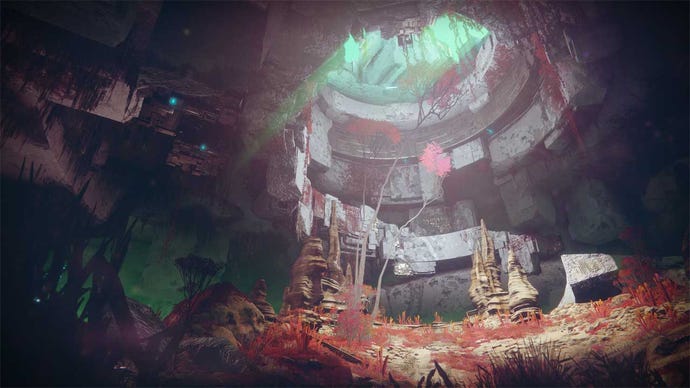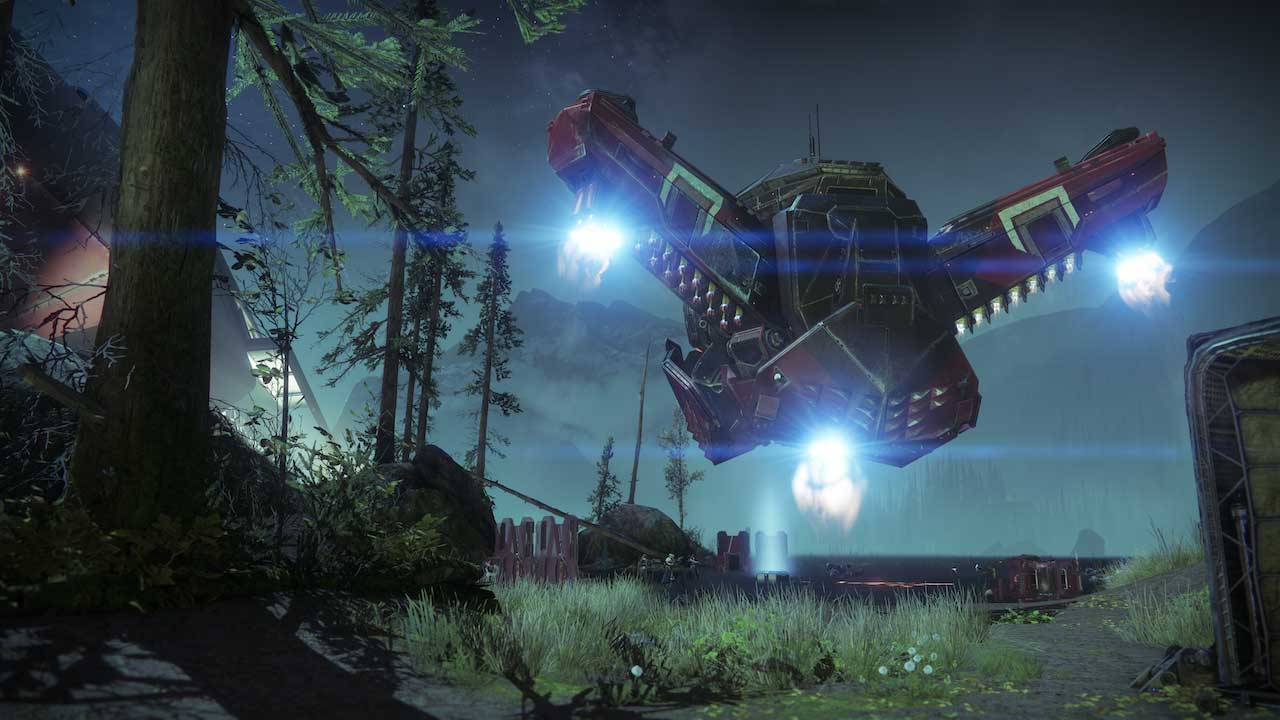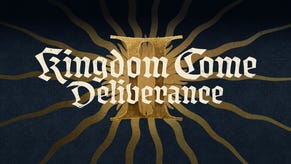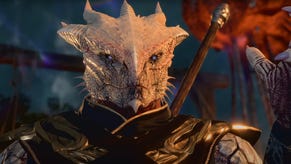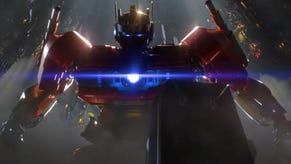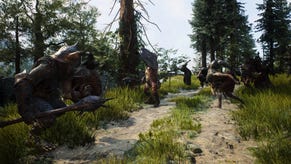How Destiny 2's stunning sci-fi landscapes put you ahead of art, story and science - but still pack all that in
We talk Destiny 2's beautiful environments with one of Bungie's key artists.
Destiny 2 presents bigger, more interconnected, more detailed and much more beautiful environments than the first game. Speaking in a roundtable interview last month, Jason Sussman, one of Bungie's environment artists, said this change is not related to dropping PS3 and Xbox 360 for the sequel.
"It’s more along the lines of what the narrative was that we wanted to achieve. And, honestly, some personal pet projects, things we wanted to do," he said.
"For Nessus, for example, I got to work on Nessus, and we always wanted to do some crazy jungle, just extreme jungle. That was our opportunity to really push that further. I think they all just kind of went in certain directions based on some personal goals we had as world artists, and some fictional relevance to what we were building."
Bungie's artists do, of course, want to challenge themselves, and to bigger and better, but while they lean into certain technologies - Destiny 2's particle effects and reflection, lighting and atmospheric systems in particular - but the team only pushes the envelope "where it makes sense" to do so, Sussman added.
The creative challenge is as important as the technical one. Sussman's work on Nessus, a Vex stronghold that has "been fully terraformed", had to bring back an established architecture as seen in D1's Venus and Black Garden environments - without just regurgitating the same old scenery.
"How we differentiated ourselves was to push other areas of the architecture you hadn’t seen before, so doing some of the circular stuff on a large scale, echoing back to Vault of Glass in certain aspects, leaning in on that fiction in various ways," he said.
"It was just fun. The Vault of Glass thing was like ‘hey, it would be really cool, what does this mean?’ So we go to the fiction guys, we’re like ‘how’d they build this s**t? How do you guys think they built this s**t? This is what we think.'"
The result of this conversation is a planet with some breathtakingly large Vex structures, slathered in Vex "milk" - the white organic fluid which is the biological entity inside the robot suits you get to fight in Destiny 2.
"That’s the essence. That’s the Vex," Sussman confirmed. Not being part of the story team, he wouldn't be drawn on the function of Nessus (is it a breeding ground? Are these structures manufacturing Vex milk?) but he did explain why it's splashing around freely when you'd expect the mobile Vex to be a bit more protective of it.
"That’s what’s inside some of these large structures. One of them is actually decomposing and breaking apart over time. So that’s actually leaking out, but it can be reformed. Like, they can re-terraform that stuff. But that block has had its day," he said.
The various story and art teams ("designers, lighting artists, world artists, effects artists, cinematics") work in a circular fashion, Sussman said, with staff from all over the company contributing ideas that go back and forth, rather than being handed down from on high.
"We’re all talking to each other. We take a lot of those ideas, push them forward, but there’s also a lot of ideas that come from the outside in. Bungie’s really inclusive that way, it’s never a case of ‘it’s my way or the highway’. I think a lot of that is just that there’s constant communication back and forth from the directors to the teams.
"We want to evolve the game, we want to make it as beautiful as possible, we want to make the gameplay as diverse as possible, we want to constantly push the envelope of what we want Destiny to be. That’s a conversation internally at the studio, and that’s how we drive all those decisions, like ‘hey, let’s try some more verticality than we have in the past, let’s push this a little bigger, let’s hide some things deeper than we did before and tell a story while we’re doing it’. So that’s how those opportunities are born."
Destiny 2's fiction gives Bungie a great deal of artistic freedom in designing environments, because each of its Destinations have been fully or partially terraformed by the Traveller or an alien race. The "bones" of a Destination are grounded in what we know of these planets and moons, Sussman said, and Bungie does look at questions of scale and realism in designing its environments and skyboxes.
"We actually had Craig Hardgrove come by the studio a couple of times. He’s actually one of the guys who worked on the Mars Curiosity Rover; he’s a geologist as well, so he gives us some insight when he sees things. It’s always nice grabbing someone who’s a professional and asking ‘hey, are my rocks cool? Is that something you would see?’" Sussman said.
But artistic ambition, story concerns and scientific accuracy must take a back seat to designing a good game. Bungie's first goals with environmental design, Sussman said, is "to make a beautiful space for people to play in, to make sure the players can navigate the space easily, and [to make a space that] they understand immediately upon entry".
"One of the cornerstones of the world art is that the space, they understand the exits, they understand the encounter pockets, they understand where most things are,"
The environment team aimed to balance the need to populate the world with lots of activities without making it over-crowded; to tuck optional content out of view without making them too hard to find; to design for the flow of the story missions, Adventures, Strikes and even possibly Raids that might come through the space.
"It’s a fine balancing act, making sure that space flows for the player and is easily digested by the player," Sussman noted.
Bungie aims to make its world navigable via mental map, even though players can now call on an actual world map in Destiny 2 to help them find activities, track their progress, and work out how to get where they want to go (even without our fabulous Destiny 2 guide, plug plug). Sussman said the team didn't let the addition of a mpa change their design goals.
"We always build for player orientation. We do the same thing in our sky boxes. We call them bubbles. So we have like bubble-to-bubble, each area, whether it’s a private bubble or a public bubble," he said.
One of the ways Bungie achieves this is by use of "weenies", a concept with origins in theme park design. It basically means always being able to see some distant object that orientates you in the space.
"The player has spatial orientation, they have somewhere they’re aspiring to get to, and they know where they came from. So we have things you can always see in the sky box, whether it’s a tower, or it’s the actual crashed colony ship in Nessus," Sussman said. "We’re always trying to show you where you’re going and where you came from in some capacity.
"That’s the macro, and the micro is the stuff we do in the actual destination, each bubble individually, to telegraph entrances and exits. So we’re constantly trying to do that so, again, any time the player doesn’t know where they’re going, there’s a large learning curve for someone, when they go into a destination, it’s not going to be a fun experience. We want you to be able to easily navigate each destination. "
Sussman said it's easier to build the big macro strokes than the smaller bubbles, where everything is crowded in the player's face - so Destiny 2's larger environments didn't cause additional challenges for the art team.
They do create an additional challenge for the player: a lot of walking. One of the complaints levelled at Destiny 2 during our playtime was the long walks between mission beats, especially in side quests. Destiny 2 doesn't give you a Sparrow right off the bat, you see - unlike the first game.
"The biggest thing for us is that we wanted players to be able to take [it] in – there’s a lot of content now. There’s a lot of off-shoots and pieces of history," Sussman said.
"And we don’t want people just blasting past it. We want you to understand that space, get map knowledge, and understand those spaces. There’s more content there for you to enjoy, and we want to make sure you’re not blasting past it and missing opportunities. There’s little nuggets everywhere."
As well as the more obvious avenues of exploration like Lost Sectors, players can expect to find some little secrets and Easter Eggs in-game.
"It would be terrible of me to reveal them, but there’s stuff to find," Sussman said.
"There’s also neat little [environmental touches to find]. Because I’m an environmental artist, I love just going through other people’s environments for how they tell their stories and history. Even if it’s just like ‘hey, this stuff is knocked off the table’ and you can see, it doesn’t just look like it was randomly placed. And then there are Ghost scannables, they tell bits of story as well."
